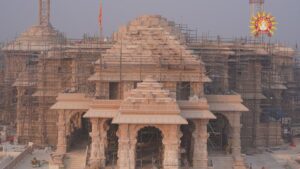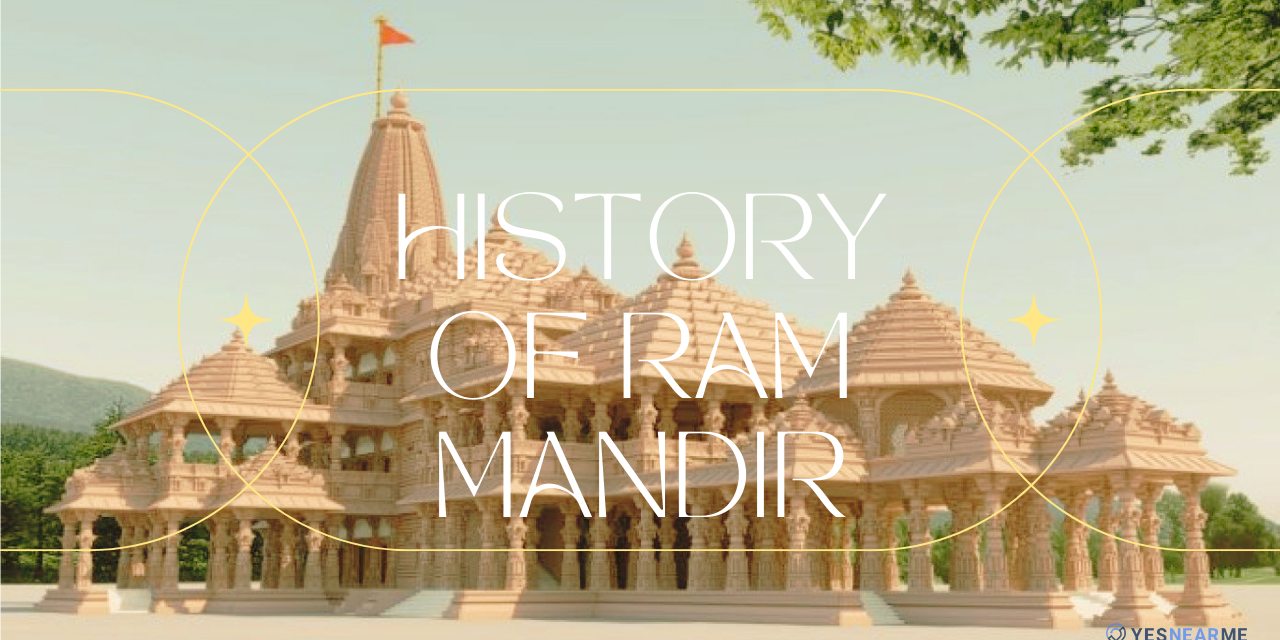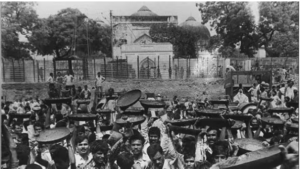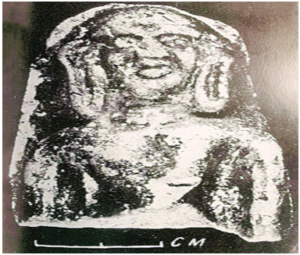Introduction To the History of Ram Mandir
This article provides an overview of the history of Ram Mandir. also known as Ram Janmabhoomi, which holds significance in Hinduism as the alleged birthplace of Lord Rama. an incarnation of Vishnu. In the 16th century, during temple raids in northern India. Babur destroyed temples, leading to the construction of the Babri Masjid on the disputed site. Religious violence was first recorded in 1853 and in 1858 the British government banned worship at the disputed sites. Devotees went to Ayodhya during the Rath Yatra in 1990, resulting in partial damage to the mosque. Then the state government led by Mulayam Singh Yadav announced a bandh to maintain order. The historical events surrounding Ramjanmabhoomi reflect the complex religious and political dynamics in India.

Babri Masjid image 1992
History of Ram Mandir Ayodhya
About Ram Mandir
Rama, an incarnation of Lord Vishnu, is a revered Hindu deity, born in Ayodhya, Ramayana.The Mughals constructed the Babri Mosque in the 16th century, considering it the birthplace of Rama.There was a violent conflict in the 1850s. In the 1980s, the Vishwa Hindu Patriarchate (VHP) established a temple for the infant Rama and asserted Hindu rights. In 1989, the VHP laid the foundation of a temple near the controversial mosque. A 1992 rally by the VHP and the Bharatiya Janata Party led to the demolition of mosques, months of riots, 2,000 deaths. and attacks on Hindu temples in Pakistan and Bangladesh. There were 2005 terrorist attacks and legal disputes. The Supreme Court order in 2019 eased the construction of the Ram temple.
The Main Temple
The Ram Temple complex in Ayodhya, India encompasses a sacred site of historical and religious significance. Considered to be the birthplace of Lord Rama, an avatar of Vishnu, the place has witnessed a turbulent history. It was earlier the site of the Babri Masjid, which was built during Mughal rule after the destruction of the existing temples. The mosque faced controversy, leading to communal tension. In 1992, the mosque was demolished, and efforts to build a Ram temple gained momentum. The area has since undergone extensive redevelopment, and the construction of the magnificent Ram Temple is a symbolic representation of the Hindu cultural revival. Pilgrims and visitors now flock to Ayodhya to experience the spiritual and architectural splendor of this revered place.

Total area: 2.7 hectares
built area: 57,400 square meters.
length Area of the temple: 360 feet
width Area of the temple: 235 feet
The height Area of the temple is 161 feet
Number of floors: 3
Height of each floor: 20 feet
Number of columns in the field









Recent Comments